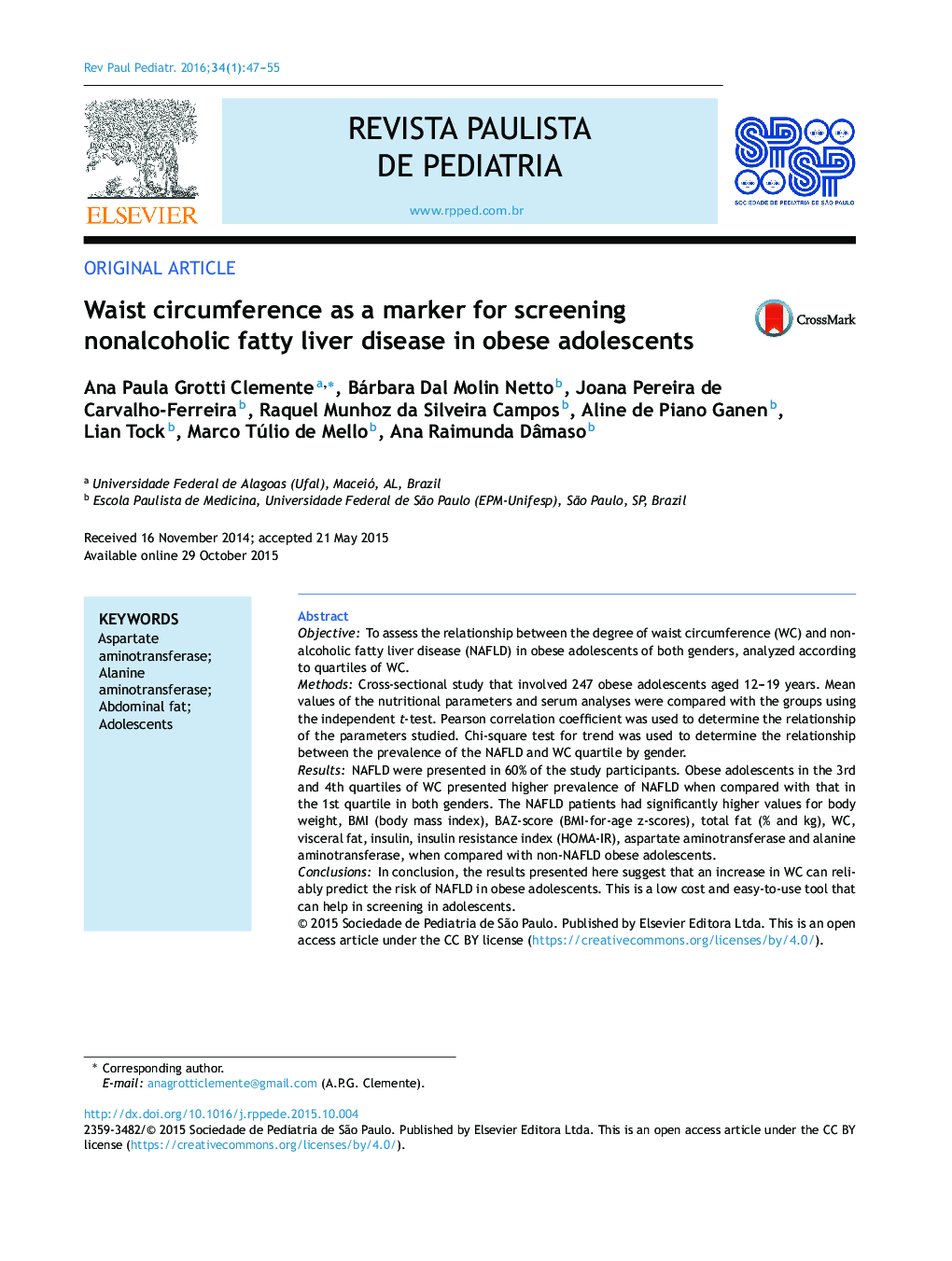| Article ID | Journal | Published Year | Pages | File Type |
|---|---|---|---|---|
| 4176173 | Revista Paulista de Pediatria (English Edition) | 2016 | 9 Pages |
ObjectiveTo assess the relationship between the degree of waist circumference (WC) and nonalcoholic fatty liver disease (NAFLD) in obese adolescents of both genders, analyzed according to quartiles of WC.MethodsCross-sectional study that involved 247 obese adolescents aged 12–19 years. Mean values of the nutritional parameters and serum analyses were compared with the groups using the independent t-test. Pearson correlation coefficient was used to determine the relationship of the parameters studied. Chi-square test for trend was used to determine the relationship between the prevalence of the NAFLD and WC quartile by gender.ResultsNAFLD were presented in 60% of the study participants. Obese adolescents in the 3rd and 4th quartiles of WC presented higher prevalence of NAFLD when compared with that in the 1st quartile in both genders. The NAFLD patients had significantly higher values for body weight, BMI (body mass index), BAZ-score (BMI-for-age z-scores), total fat (% and kg), WC, visceral fat, insulin, insulin resistance index (HOMA-IR), aspartate aminotransferase and alanine aminotransferase, when compared with non-NAFLD obese adolescents.ConclusionsIn conclusion, the results presented here suggest that an increase in WC can reliably predict the risk of NAFLD in obese adolescents. This is a low cost and easy-to-use tool that can help in screening in adolescents.
ResumoObjetivoAvaliar a associação entre o grau de circunferência da cintura (CC) e doença hepática gordurosa não alcoólica (DHGNA) em adolescentes obesos de ambos os sexos, avaliados de acordo com quartis de CC.MétodosEstudo transversal envolvendo 247 adolescentes obesos com idades entre 12 a 19 anos. Os valores médios dos parâmetros nutricionais e analises séricas foram comparados com os grupos utilizando o teste t independente. O coeficiente de correlação de Pearson foi utilizado para determinar a relação entre os parâmetros estudados. O teste do qui-quadrado de tendência foi utilizado para determinar a relação entre a prevalência da DHGNA e quartil da CC por sexo.ResultadosDHGNA estava presente em 60% dos participantes do estudo. Adolescentes obesos nos quartis 3 e 4 de CC apresentaram maior prevalência de DHGNA quando comparados com aqueles no primeiro quartil em ambos os sexos. Os pacientes com DHGNA tinham valores significativamente mais elevados de peso corporal, IMC (índice de massa corporal), IMC/I (IMC para Idade) z-escore, gordura total (% e kg), CC, gordura visceral, insulina, índice de resistência à insulina (HOMA-IR), aspartato aminotransferase e alanina aminotransferase, quando comparados com adolescentes obesos sem DHGNA.ConclusõesEm conclusão, os resultados aqui apresentados sugerem que um aumento da CC pode prever com segurança o risco de DHGNA em adolescentes obesos. Essa é uma ferramenta de baixo custo e fácil de utilizar que pode ajudar na triagem de adolescentes.
